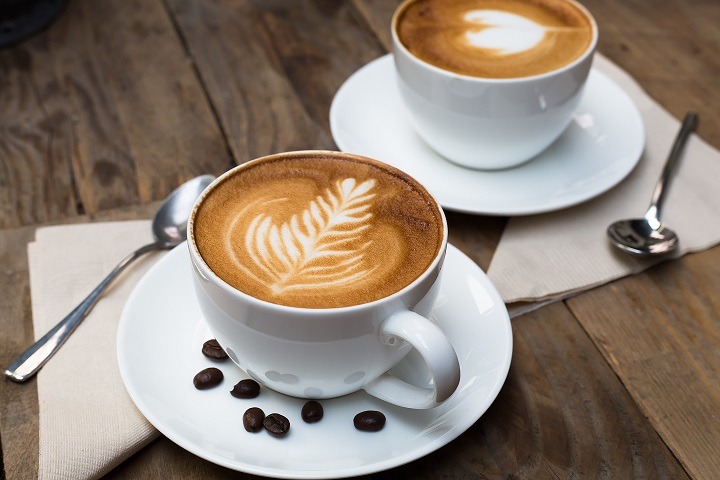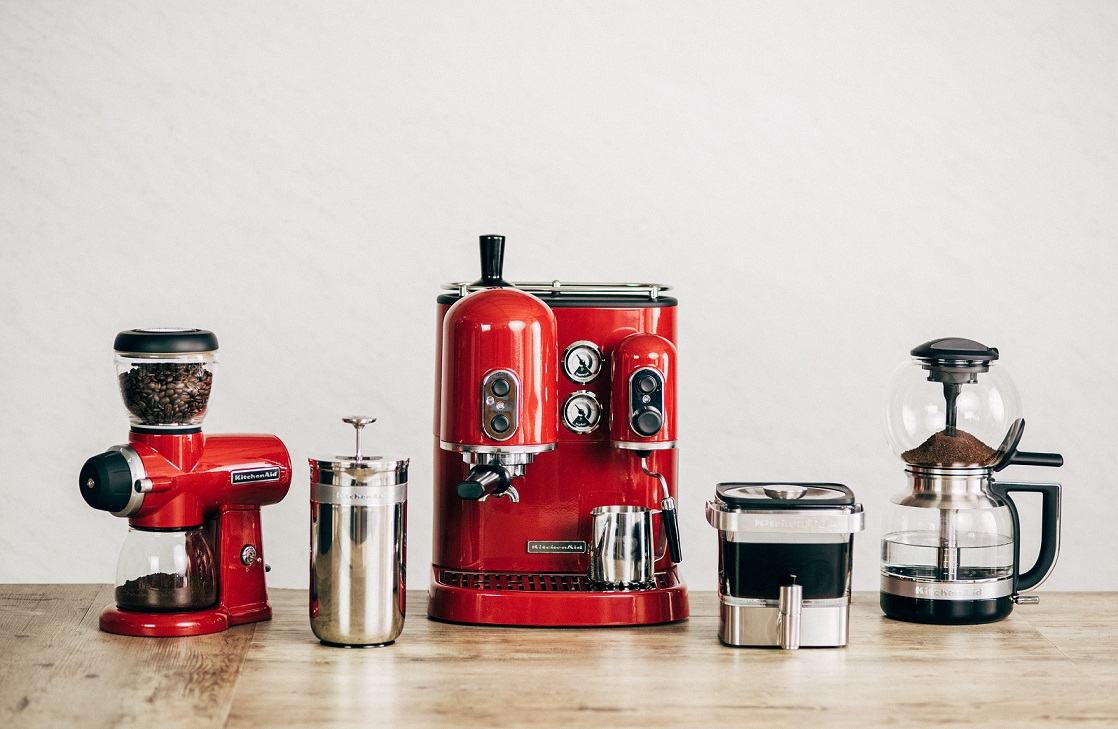Our Expert Barista Answers Your Most Pressing Coffee Questions
Eden-Marie Abramowicz of Bastet Coffee and KitchenAid offer some expert tips on turning your kitchen into a coffeehouse
Making great coffee at home is way more than pouring some grounds into a drip coffee machine. We're talking knowing your roasts, changing your grind, and timing your brew. Getting the jitters? Have no fear; KitchenAid® craft coffee expert Eden-Marie Abramowicz of Bastet Coffee is here to talk you through some of the finer points of home brewing so you can kick start your barista ambitions.
What is the difference between single-origin beans and blends?
"Single-origin beans may broadly come from one region, or sometimes, they may come from somewhere as specific as a single farm or lot," Eden says. These beans will showcase the flavors of their source, with each point of origin displaying its own unique characteristics.
Blends, on the other hand, combine beans from various origins. Often these coffees have a lot of attention paid to their flavor profiles as the right balance is sought. "You might start with beans from Brazil, then find adding a certain bean from Ecuador really rounds out the flavor," says Eden. "Blends create a synergy between beans that can be really beautifully done."
What is the best coffee to water ratio?
Eden recommends one part coffee to 17 parts water. For the best results, you'll want to weigh your coffee: 30 grams of coffee to 525 grams of water. "It sounds like a pain to weigh your coffee," says Eden, "but it is quicker than you think and will change your life."
How do I make a good French press coffee?
Eden recommends a coarse grind for this brewing method. Add your coffee to the press, followed by the water. Keep in mind the ratio! The KitchenAid® Precision Press makes it particularly easy; it has a built-in scale and timer to help you keep all the right proportions and track the time.
Brewing time will be around 4 minutes. You'll notice a crust of coffee grounds building on the top of your brew. Eden suggests breaking that crust halfway through the brewing time with a spoon and mixing those grounds back into the water to help extract more flavor."
How do I make a good pour-over?
A pour-over grind is a lot finer than the French press grind, though not as fine as espresso, says Eden. Having a burr grinder at home will really help you get it just right. The KitchenAid® Burr Grinder is a great option; it has 15 grind settings to ensure that you've got the right size for any brewing method.
Don't pour all your water in right away, Eden warns. Start with a small amount to evenly coat all the grinds, and let them sit for 45 to 60 seconds. Called the "bloom," this allows the coffee to release bubbles of CO2 that have built up over the roasting process. Then continue with a consistent pour in a clockwise movement to finish the brew.
How do I make cold brew coffee?
"Cold brew is a method of brewing coffee with room temperature or cold water to produce a concentrate served as iced coffee," explains Eden. She recommends using 9 ounces of coffee per 42 ounces of water, making sure the grounds are fully submerged. A very coarse grind is needed due to the extended contact between the water and coffee; cold brew takes 12 hours to fully extract. The KitchenAid® Cold Brew Coffee Maker is an excellent choice for this brew method. It fits nicely in the refrigerator to keep your coffee cold and has a tap for easy pouring."
How do I pour a good shot of espresso?
Set your grinder to the finest setting. Espresso is the fastest brewing method, and a fine grind is needed to make sure the water absorbs and extracts the coffee instead of passing right through it. Eden recommends using 18 grams of espresso for each pull.
As the espresso pours, you'll be looking for a stream that looks like thick, warm honey with a tiger-eye coloring, says Eden. There should be about a 5-second lag before the coffee begins to pour. If your espresso comes out too fast or has a whitish color, your grind is likely too coarse.
How do I steam milk?
"There are 2 objectives when you steam milk: adding air and heating the milk," explains Eden. Fill your steaming pitcher to about a finger width below the spout to prevent spilling, then insert your steam wand at a 45-degree angle with the holes at the tip fully submerged. The KitchenAid® Espresso Maker has a fully adjustable frothing arm which makes it easy to get the right angle.
The first 5 to 7 seconds of the steaming process is adding air. Turn your steam all the way on and drop your pitcher just slightly until you hear a soft hissing sound. "It should be quiet, not a scream," Eden adds. After the first few seconds, submerge the steam wand until you get a whirlpool motion. This will evenly mix the milk as you heat it, creating that coveted "microfoam."
Be careful not to scald the milk! "A good rule of thumb is, 'If it's too hot to touch, it's too hot to drink,'" Eden says. Turn off the steam wand fully before removing the milk.

